“Cradle Stone”
Market: Saturday (Nüzhetiye Caddesi)
Overlooked by most visitors to İstanbul, Beşiktaş (“Cradle Stone” in an allusion to a story that a piece of Jesus’ cradle was brought here from Jerusalem) is a busy shopping area with a lively student vibe and a strong allegiance to the eponymous Beşiktaş football team, nicknamed “the Black Eagles“. It’s also an important transport interchange with lots of buses passing through on their way up the Bosphorus and ferries ploughing up the strait and across it to Üsküdar and Kadıköy.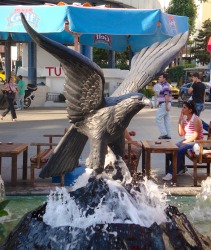
The main attraction here is the splendid Deniz Müzesi (Naval Museum). However, there are also a number of interesting mosques and churches as well as the small Ihlamur Kasrı, a late Ottoman pavilion in pretty gardens.
Several upmarket hotels have taken root in Beşiktaş and there are eating options to suit all tastes (including vegan) and budgets.
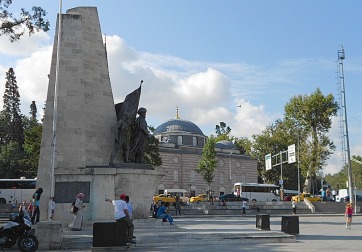 Around Beşiktaş
Around Beşiktaş
Heart of Beşiktaş is the sprawling Barbaros Meydanı that rolls back from the terminal for ferries to Üsküdar. It is dominated by a statue of Barbaros Hayreddin (c.1478-1546), the admiral better known to the west as Barbarossa (Redbeard) who managed to establish Ottoman control of the Mediterranean during the reign of Sultan Süleyman the Magnificent. He is buried in the two-storey octagonal tomb on the far side of the square that was designed by Sinan in 1541. In 2023 the bus terminal that filled half the square was removed to provide a wide open area where buskers now perform to admiring audiences.
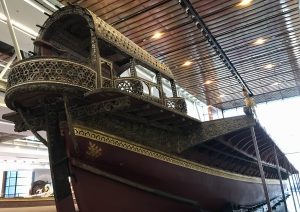
Right beside the square, the Deniz Müzesi (Naval Museum, closed Mondays, admission TL60 2024) is home to a magnificent collection of wooden caiques once used to row the sultans around the Bosphorus. Across the road from it is the Sinanpaşa Cami, a solid stripy structure, that was commissioned from Sinan by another admiral, Sinan Paşa in 1555.
Beside the mosque Barbaros Bulvarı carves its busy way uphill to Yıldız. Tucked away off its south side is Abbasağa Park, a rather conventional municipal park but a handy place to take a break after visiting the Naval Museum. For ardent democrats, its big drawcard is a cluster of statues commemorating those men (and one woman) who gave their lives in the struggle to bring greater freedom to Turkey, amongst them the journalists, Uğur Mumcu and Abdi İpekçi. The park also contains a more contemporary memorial, albeit less permanent, to the half-dozen young men lost during the course of the Gezi Park protests that rocked the city in the summer of 2013.
Near the park is the pretty little Abbasağa Cami (Abbasağa Cami Sokak), rebuilt in 1835 with a wooden ceiling and galleries that stand in homely contrast to the grandeur of the Sinanpaşa Cami. Near it is much larger stone-built Surp Asdvadzadzin (St Mary), a restored Armenian church built in 1838 by Garabet Balyan with a school facing it across the street. If it’s unlocked (unlikely) you should pop in to see the concealed dome designed to comply with the law that at that time forbade churches to have visible towers and domes. 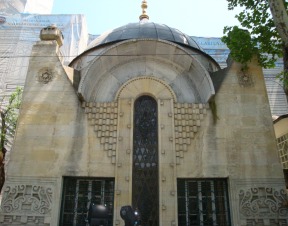
On the oposite side of Barbaros Bulvarı is the unique shrine to Şeyh Muhammed Zafir, the spiritual advisor to Sultan Abdülhamid II, in which a library, fountain and dervish lodge pool elements of Art Nouveau and Ottoman Revival architecture. It was designed by Raimondo d’Aronco. Up the steps behind it the Ertuğrul Tekke Cami is far more conventional in design.
Returning to the coast road you might want to divert briefly towards Ortaköy in search of the 19th-century Greek Orthodox Church of St Mary which is rather hard to spot amongst the shops on the inland side of the street. Its doors are rarely unlocked anyway. If you keep going, then strike uphill along Çitlembik Yokuşu you will come to the Kılıç Ali Paşa Sarnıcı (cistern) that has been converted to house the city’s İtfaiye Müzesi (Fire Brigade Museum, closed Mondays, admission free).
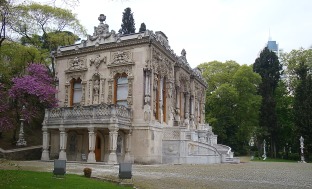 Heading back towards Dolmabahçe you should turn down Ortabahçe Caddesi to find the Ihlamur Kasrı (closed Mondays, small admission fee). This was designed by Nigoğayos Balyan for Sultan Abdülmecid I (r. 1839-61), who wanted a lodge where he could break the journey between Dolmabahçe Sarayı and the Golden Horn shipyards at Kasımpaşa. The end result was a pair of pavilions in a small landscaped park, one of which, the Mabeyn Köşkü, would host the sultan and his guests, while the other, the Maiyet Köşkü, would host his harem. Like the slightly larger Küçüksu Kasrı, the Mabeyn Köşkü is thickly festooned with baroque carvings on the outside. Inside, however, it has only eight small rooms, each of them adorned with lovely parquet floors, porcelain fireplaces delicately painted with flowers and indigo-coloured glass. As at Küçüksu, there are no bedrooms since the sultan rarely spent the night at Ihlamur. Peacocks prowl the garden which is at its most magnificent in spring when the magnolias are in bloom.
Heading back towards Dolmabahçe you should turn down Ortabahçe Caddesi to find the Ihlamur Kasrı (closed Mondays, small admission fee). This was designed by Nigoğayos Balyan for Sultan Abdülmecid I (r. 1839-61), who wanted a lodge where he could break the journey between Dolmabahçe Sarayı and the Golden Horn shipyards at Kasımpaşa. The end result was a pair of pavilions in a small landscaped park, one of which, the Mabeyn Köşkü, would host the sultan and his guests, while the other, the Maiyet Köşkü, would host his harem. Like the slightly larger Küçüksu Kasrı, the Mabeyn Köşkü is thickly festooned with baroque carvings on the outside. Inside, however, it has only eight small rooms, each of them adorned with lovely parquet floors, porcelain fireplaces delicately painted with flowers and indigo-coloured glass. As at Küçüksu, there are no bedrooms since the sultan rarely spent the night at Ihlamur. Peacocks prowl the garden which is at its most magnificent in spring when the magnolias are in bloom.
Today, the steps leading up to the pavilion form the backdrop for myriad wedding photos since the Beşiktaş Registry Office is just across the road.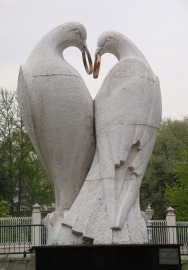
Facing Ihlamur Kasrı is a small hillside peace park with right beside it the Beşiktaş Cemevi, a place of worship for local Alevis. Walk up the slope to find the Suslu Karakol (Decorated Police Station, 1866), built on high during the resign of Sultan Abdülaziz to make it easier to keep an eye on things. The overgrown park just beneath it contains two large inscription boards. Clearly Ottoman, they seem entirely forgotten.
Back on the main coast road if you turn right and walk towards Dolmabahçe you will come on the right to Şair Nedim Caddesi which leads up to Akaretler and the W Hotel created out of what were once terraced houses built to accommodate the workers from the Dolmabahçe Palace by Sarkis Balyan. On the corner of Şair Nedim a cafe makes use of a minor work of the First National architect, Vedat Tek, that once housed the national estate agency.
Walking back to the bus stop in Barbaros Square you will pass a brick building that was an annexe to the Dolmabahçe Palace. Today it’s a glorified shop that does still manage to stage some temporary exhibitions too. Nearby is the Shangri-La Hotel housed in what started life in the 1930s as a tobacco warehouse.
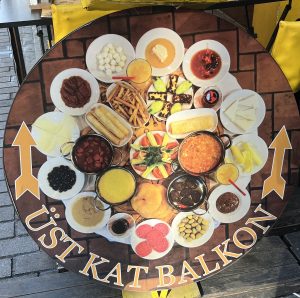 Eating and drinking
Eating and drinking
The area around Beşiktaş market is great for eating out, particularly if you’re on a tight budget. You’ll find everything here, from long-lived bakeries and köfte shops, to a cluster of lively Nevizade-style meyhanes around the fish market.
Between Akaretler and Ortaçeşme Caddesi, Çelebi Oğlu Sokak has turned into a Beşiktaş ‘breakfast street’ full of cafes offering a slightly cheaper take on the big-breakfast scene than suburbs such as Rumeli Hisarı. While here, look out for places serving pişi, small pieces of fried bread wrapped around a variety of delicious fillings.
If you’re after the flavours of the old Turkey then the 7-8 Hasanpaşa Fırın is something of a Beşiktaş institution – a bakery whose curious name recalls an illiterate Ottoman who signed his name with the Arabic characters for seven and eight. It’s been in business on since 1893 despite its biscuity offerings looking less immediately enticing than those in more modern shops. Also worth visiting is the Tarihi Unkapanı Pilavcısı (Historic Unkapanı Rice Shop) where you can sample such favourites as chicken or beans with rice.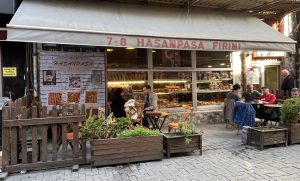
The cafe in the Maiyet Köşkü of Ihlamur Kasrı is a great place to grab a tea and a cake, whether in summer when you can sit out and admire the garden or in winter when you will be sitting beneath restored ceilings in a historic building.
Sleeping
Conrad İstanbul Hotel. Tel: 0212-227 3000
Four Seasons İstanbul at the Bosphorus. Tel: 0212-381 4000
Shangri-La Bosphorus. Tel: 0212-275 8888
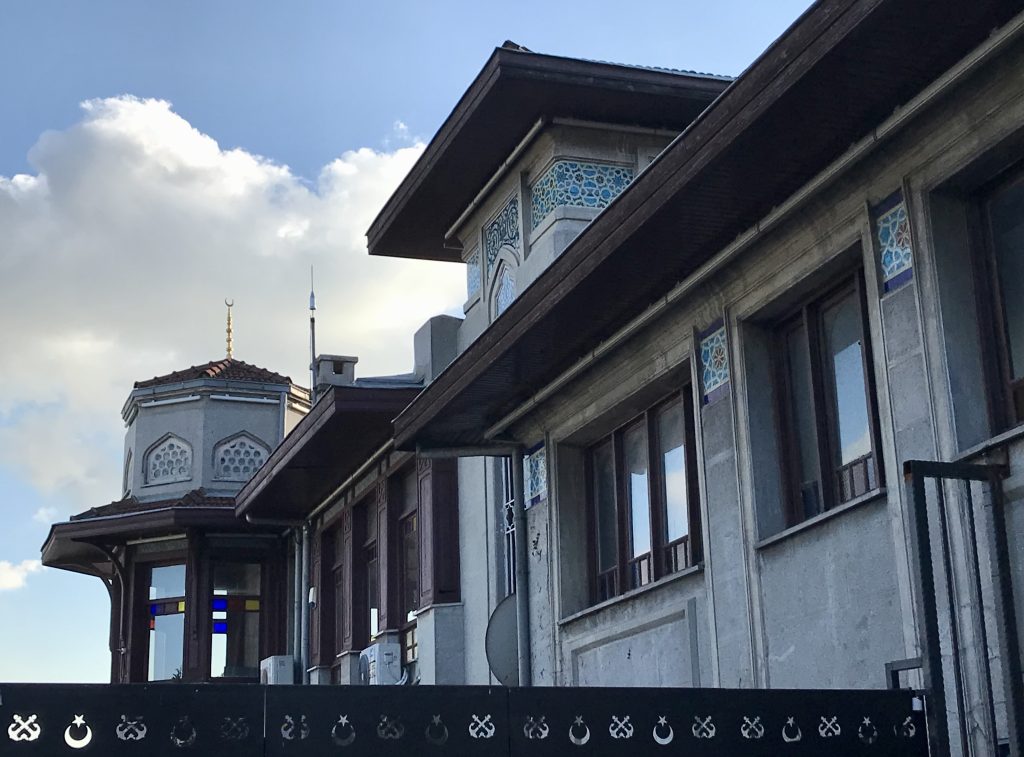 Transport info
Transport info
You can pick up a bus to Beşiktaş from Kabataş.
Dolmuşes from Taksim to Beşiktaş run from the top of Gümüşsuyu Caddesi.
Minibuses run from the bottom of Barbaros Bulvarı to Sarıyer and Tarabya on the Bosphorus, stopping at Levent Metro and at a Metrobus interchange.
Work is still in progress on a Metro that will run from Beşiktaş to Yıldız under Barbaros Bulvarı. An underground link is also being built to link Kabataş to Beşiktaş.
Ferries from Beşiktaş cross to Üsküdar and Kadıköy (https://www.sehirhatlari.istanbul/en). Before boarding your ferry take a look at the cute tiled ferry terminal designed in 1911 by First National architect, Ali Talat Bey (1869-1922). There’s bookshop inside with a cafe on the roof terrace.
Nearby areas


